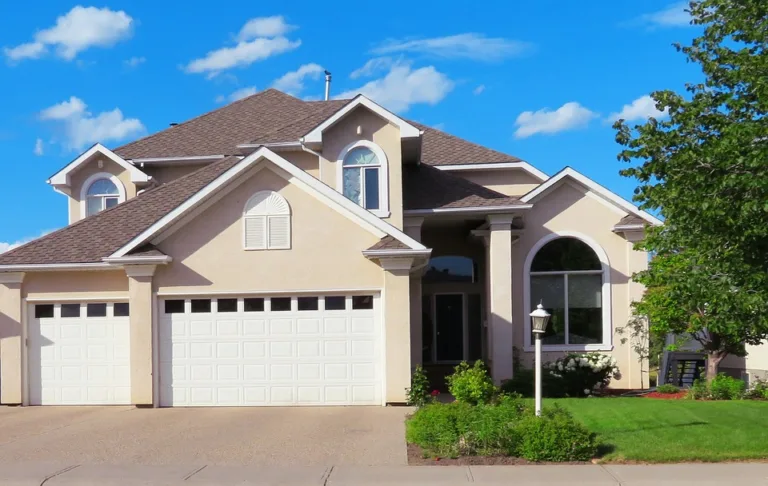
Pretty in Paint: How to Transform Your Kitchen Cabinets Like a Pro
If you’re a fan of home makeovers, you know the thrill of a dramatic transformation. And when it comes to satisfying our desire for change, newly painted kitchen cabinets take the cake. It’s a project that can instantly refresh the look and feel of your entire kitchen without breaking the bank. Plus, you can do it yourself! Here’s a step-by-step guide on how to paint your kitchen cabinets like a pro.
How much does it cost to paint kitchen cabinets?
Tackling this project yourself can save you a lot of money compared to hiring professionals. According to Forbes, a professional paint job can cost up to $2,500, while the DIY route can range from as low as $200 for a small kitchen to around $775 for a larger one. Considering that replacing cabinets can cost between $3,000 and $25,000, painting is undoubtedly a budget-friendly option.
How long does it take to paint kitchen cabinets?
Painting kitchen cabinets is not a quick task. Small kitchens can be completed within a weekend, but larger ones may take six to eight days. Patience is key here, so be prepared for a longer timeframe. It’s worth the wait for the stunning results!
Can I paint kitchen cabinets like a professional?
Yes, you can! Renae Brabham, a cabinet painting expert, assures that anyone can paint their cabinets. The key is to avoid cutting corners and take the time to do it right. Don’t rush the process and use high-quality products.
Can I paint my cabinets without sanding?
No, it’s not recommended to skip the sanding step. Fresh paint adheres best to sanded surfaces, ensuring a smooth and long-lasting finish. If you don’t want to sand manually, you can use liquid sandpaper as an alternative.
Is it better to roll or brush paint on the kitchen cabinets?
Both brushing and rolling have their advantages. Brushing is great for small areas and detailed work, while a foam roller allows for faster application on larger flat surfaces. For gloss paint, a brush is preferred to avoid a bobbly texture.
How much paint is required to paint kitchen cabinets?
On average, you’ll need about one gallon of paint for every 350 square feet of surface you want to paint. This estimate may vary depending on the sheen and color you choose.
Kitchen cabinet painting materials you will need:
Step 1: Examine your Cabinets
Before diving into the painting process, assess the condition of your cabinets. Repair any small chips or cracks with wood filler. However, if the veneer is peeling or the woodwork is warped, consider replacing the damaged parts.
It’s also essential to consider the type of material your cabinets are made of. Wood, wood laminate, veneer, fiberboard, and metal cabinets can be easily repainted. Plastic laminate and thermofoil cabinets may require special paints and techniques for proper adhesion.
Step 2: Prep the Space and Gather Your Supplies
Preparation is key to a successful paint job. Clear the kitchen space, dust thoroughly, and protect countertops and floors with brown builder’s paper or plastic tarps. Set up a work area in a well-ventilated space, such as a garage or basement.
Step 3: Remove the Doors and Hardware
Removing the cabinet doors, drawers, hinges, and hardware is necessary to ensure complete access to all surfaces. Number the doors as you remove them to avoid confusion and keep the hardware organized.
Step 4: Prepare Your Surface
Cleaning and deglossing the surface is crucial for paint adhesion. Using a product like M-1 Paint Gloss Remover or liquid sandpaper, wipe down all surfaces, allowing them to dry completely.
Step 5: Choose Your Paint and Application Tools
When selecting paint, consider factors such as latex versus oil-based, finish, and durability. Latex paints are easier to use and clean up, while oil-based paints offer better coverage and durability. Choose a high-quality paint and consider using a primer for optimal results.
For application, you can opt for spraying or using a brush and roller. Spraying provides a smooth finish but can be costly. If using a brush and roller, apply the paint in thin layers, avoiding excessive brush strokes.
Step 6: Apply Primer and Paint
Start by applying a layer of primer to all surfaces, allowing it to dry completely. Follow with two to three coats of paint, sanding lightly between coats for a smooth finish. Allow ample drying time between coats to prevent smudging or fingerprints.
Step 7: Put It All Back Together
Once the cabinets have fully cured, reattach the doors, hinges, and hardware. Consider adding new hardware for an extra touch of style and enjoy your freshly painted kitchen cabinets!
By following these steps, you can transform your kitchen cabinets and achieve professional-looking results without the hefty price tag. So, roll up your sleeves and get ready to enjoy a new and improved kitchen!
About the Author:
Rachel Silva is the Assistant Digital Editor at ELLE DECOR, specializing in design, architecture, trends, and haute couture. Her work has been featured in Time, The Wall Street Journal, and Citywire.